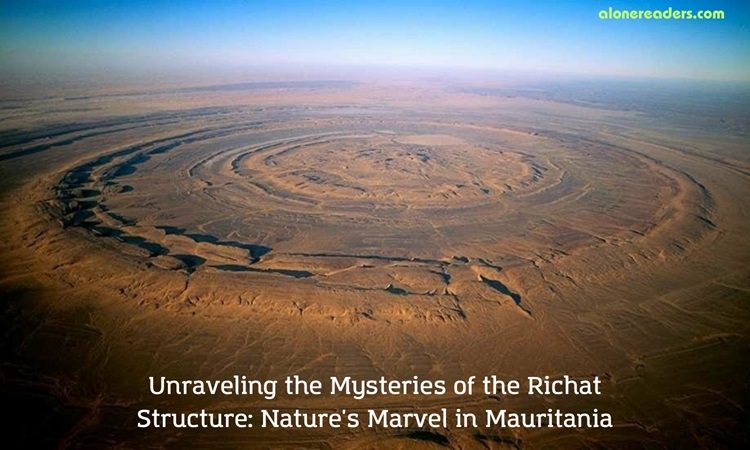
The Richat Structure, a prominent geological formation in Mauritania, has long captivated the curiosity of scientists and enthusiasts alike. Initially mistaken for a meteorite impact structure due to its striking circular shape and immense size, the Richat Structure, also known as the Eye of the Sahara, has emerged as a fascinating subject of study in the fields of geology and Earth sciences.
Located in the Sahara Desert, the Richat Structure spans approximately 40 kilometers in diameter, making it visible from space. This visibility has not only added to its allure but also prompted numerous theories about its origin. The initial hypothesis of a meteorite impact stemmed from its concentric ring-like appearance, which is often associated with impact craters. However, subsequent studies and analyses have gradually shifted the scientific consensus away from this theory.
Today, the Richat Structure is widely believed to be the result of geological processes, specifically uplift and erosion. The theory posits that the layers of rock comprising the structure were pushed upwards due to the movement of geological plates. Over time, this uplifted area was subjected to the relentless forces of erosion, which gradually unveiled the different layers of rock, creating the distinctive pattern we see today.
What makes the Richat Structure particularly intriguing is the variety of rocks present within it. These include igneous and sedimentary rocks, with some layers being as old as the Proterozoic era. The varying resistance of these rocks to erosion has played a crucial role in shaping the structure's unique appearance. The more resistant layers have remained relatively intact, forming the ridges that define the concentric circles, while the less resistant ones have been worn away, contributing to the formation of valleys and depressions.
The color variation seen in the structure is another point of interest. The diversity in rock types leads to a palette of colors that range from deep browns to lighter shades of beige and grey. This coloration not only enhances the visual appeal of the Richat Structure but also provides valuable insights into the composition and age of the different rock layers.
Despite the current understanding, the Richat Structure still holds many secrets. No comprehensive studies have definitively explained every aspect of its formation. For instance, the exact process of how the initial uplift occurred and the subsequent specific erosion patterns that led to the current formation are subjects of ongoing research and debate. The lack of conclusive evidence on these fronts keeps the Richat Structure as a topic of scientific interest and speculation.
Moreover, the Richat Structure's accessibility and distinct features make it a valuable educational and research site. Geologists and students from around the world visit this natural wonder to study its formation and gain insights into geological processes that are applicable globally. The structure serves as a natural laboratory, offering a rare opportunity to observe and study geological formations that span billions of years.
The Richat Structure's significance extends beyond the scientific community. It is a symbol of natural beauty and mystery, attracting tourists and nature enthusiasts to Mauritania. Its presence in the Sahara Desert adds to the region's geographical and cultural richness, making it a point of pride for the local community and the country at large.
In conclusion, the Richat Structure of Mauritania is a testament to the dynamic and ever-changing nature of the Earth's surface. What was once thought to be a consequence of a dramatic event from outer space is now understood as a product of the planet's own geological processes. The Richat Structure continues to be a subject of fascination and study, reminding us of the complexities and wonders of our natural world. As research progresses, it is likely that new insights will emerge, further unraveling the mysteries of this remarkable geological formation.